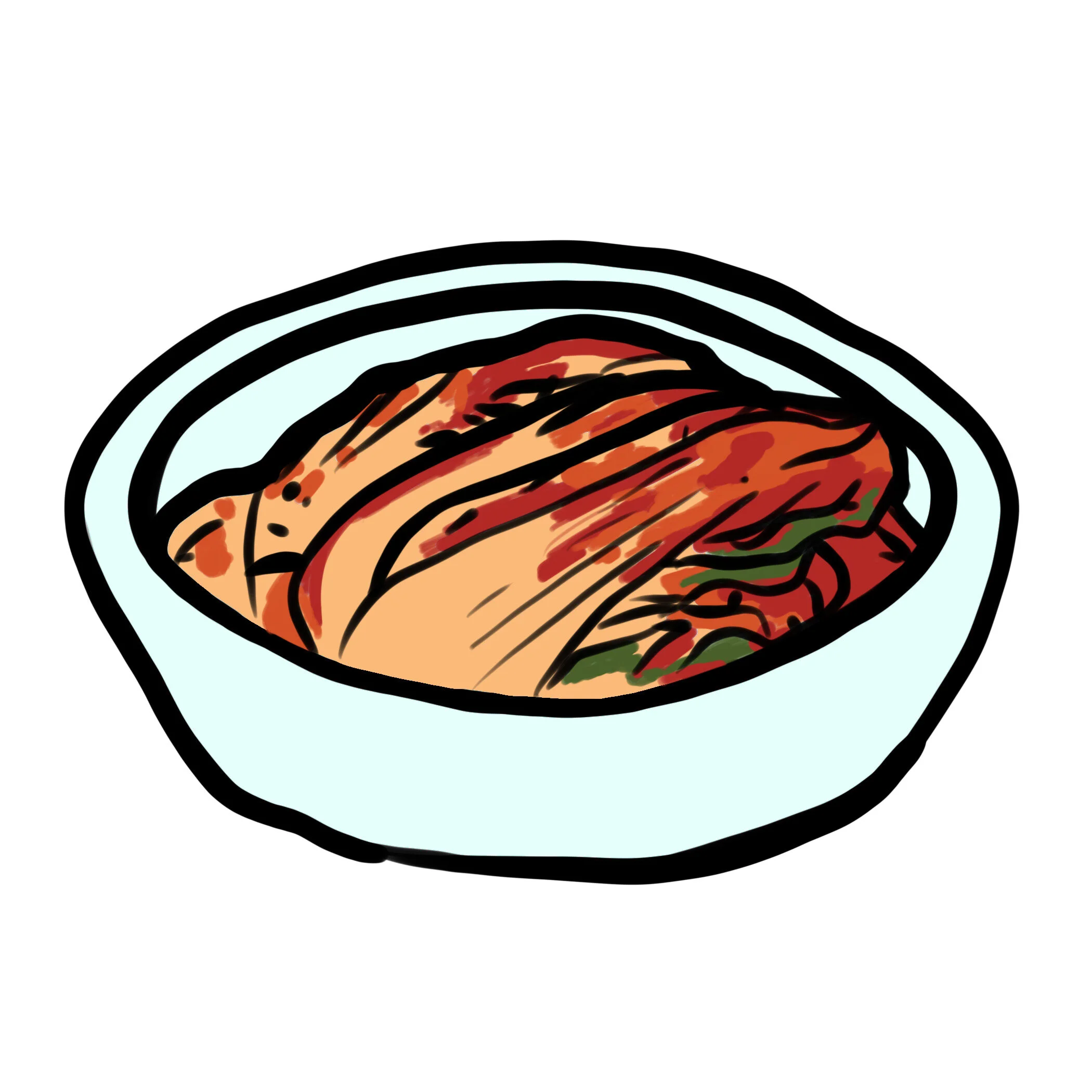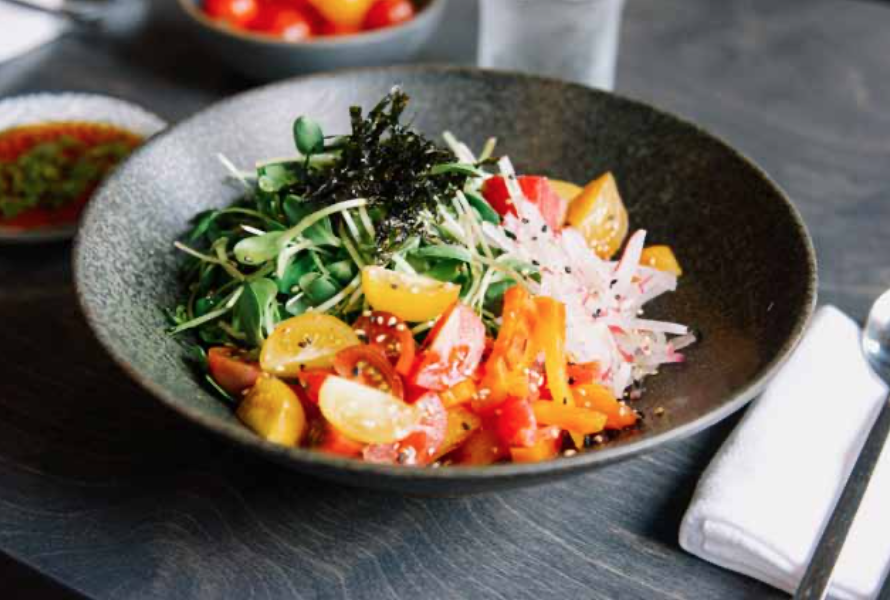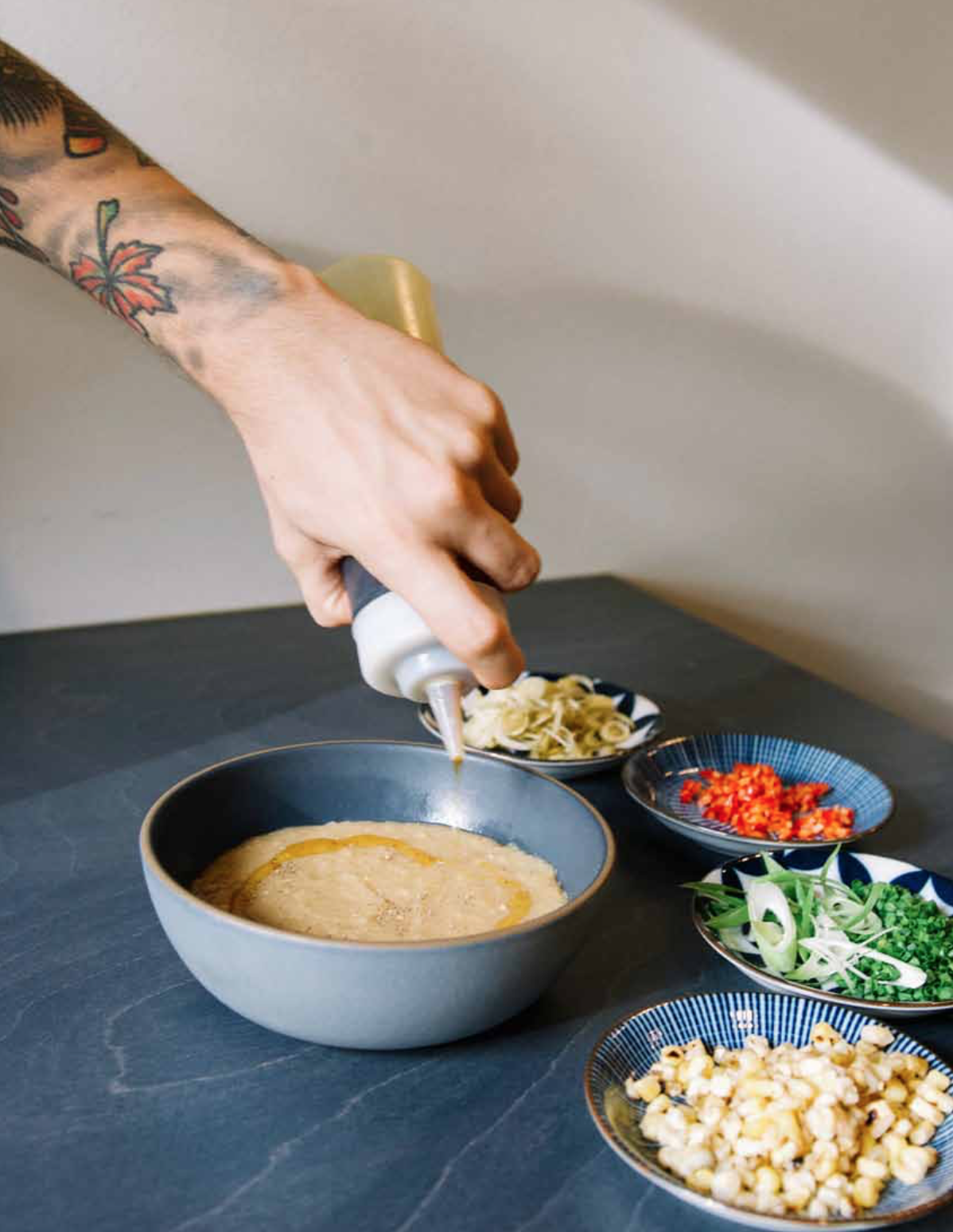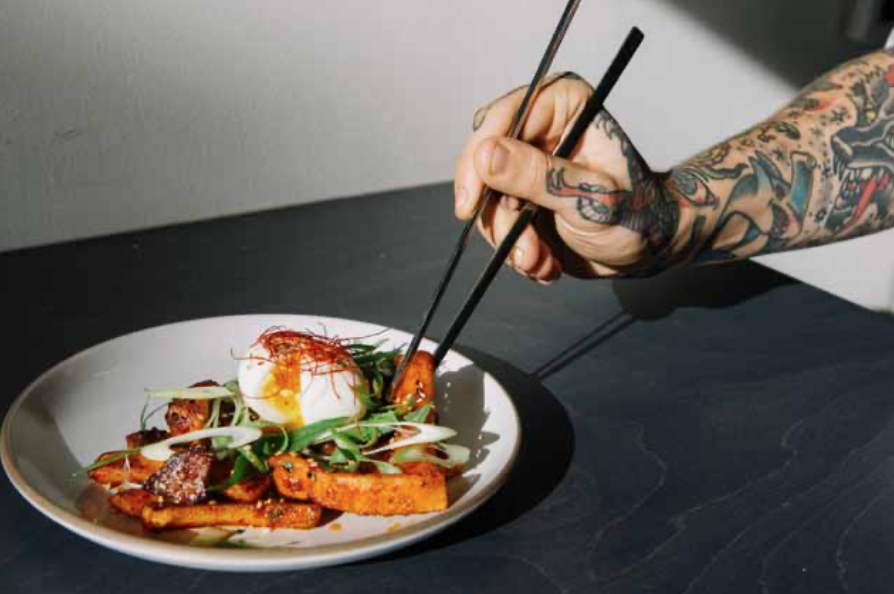Point of Origin Episode 13
Korean Food and Modernity
Through the stories of Sonja Swanson, Seoyung Chung and Ji Hye Kim, this episode explores the ancient recipes of Korea and how they are taking on modern adaptions. Swanson came to Korea to learn about her cultural heritage, a one-year stay became a seven-year journey. Together, Swanson and Seoyung are using food to tell a story about the culinary history of Korean, through adaption of ancient recipes. Ji Hye Kim, owner of Miss Kim, came to the United States from Korea, as a teenager. Researching ancient Korean cookbooks and practices, Kim has created a menu that takes cues from century old recipes, as well as from modern adaptations.
Available on Apple Podcast, Spotify, & iHeartRadio
What is Bibimbap?
Image Credit: Quentin Lebeau
Eumyangohaeg is an ancient theory of yin and yang and says that five elements - earth, wind, fire, wood, metal and water - make up the universe. Korean food revolves around this concept and On the Korean table, garnishes, accompaniments and dishes with five colors represent each of these five elements. No other dish evokes and represents Eumyangohaeng through food as strongly as Bibimbap.
On our first stop, we meet Jennifer Lee owner of Jeon Ju Restaurant in Los Angeles' historic Koreatown, a family-owned restaurant that has been specializing in Bibimpbap for over 22 years.
Bibimbap : Literally translates to “Mixed Rice”. A simple dish that traditionally consists of rice, a fried egg, and vegetables.
Ji Hye Kim on Kimchi Memories
Image Credit: Quentin Lebeau
“I remember her agonizing over whether our family of 6 would need 100 heads of cabbage to last us through the long winter into the early sprint time. I remember her tossing all the dressing for the napa cabbage kimchi in what at the time looked like a bath tub to a first grader. She would spend the whole day with her sisters or neighborhood ladies, hunched over and stuffing the dressing into the brined napa cabbage leaves. I’d approach and wait for her to give me a taste. She will make the perfect bite of the cabbage and the filling and I’d eat from her hands, her fingers glistening and stained red. Later the whole family will feast on all the kimchi fixings and slices pork belly, like we did every fall.”
Kimchi : Literally translates to “Soaked Vegetables”. Traditionally a side dish that is composed of salted and fermented vegetables (like napa cabbage and Korean radish), with a combination of spices.
“Seoul or Gyeonggi style kimchi is still what I go for, a little lighter in the use of fermented fish and well balanced in garlic and chili flakes. At Miss Kim, I add either watercress or arugula instead of minari, which is hard to come by consistently and locally. Being in Michigan, which is very much far and away from Korea, I don’t attempt to replicate, but rather take inspiration from my mother’s kimchi and cooking and create the best version I can make with what is locally available in my new home town of Ann Arbor. I’m happy to report that my mother, the best cook in the family and notoriously critical of others’ cooking, did not judge it too harshly.”
Miss Kim : Ji Hye Kim
Image Credit: Marina Goldi [Whetstone Volume 2]
Miss Kim, a Korean restaurant, opened in 2016 as a proud part of the Zingerman’s Community of Businesses. Chef Ji Hye Kim grew up in Seoul, South Korea and is obsessed with ancient Korean culinary texts and the finer points of fermentation. Despite rumors of its eponymous origin, the name Miss Kim was chosen for its reference to the most recognizable Korean last name and the restaurant’s female chef-owner.
How did American Chili Peppers get to Korea?
[ Excerpt from Bburi Kitchen website ]
Image Credit: http://bburikitchen.com
[ Korean names of chiles pictured above ]
Put-gochu / Hong-gochu
Ggwari-gochu
Cheongyang Gochu
“So how did an ancient American spice become such a staple in Korean cuisine today? One big step, as with many modern fruits and vegetables, was the Columbian Exchange, which brought chilies to Spain by 1493. Here’s where it gets a little murky. In the most common version of the story, Portuguese traders brought chilies to Japan, who then brought them to the Korean peninsula during the Imjin Wars (1592–98). But other sources point out that Indian and Arab traders had already been in contact with China via the Silk Road. The Ming and Joseon Dynasties had a close trading relationship. In either case, chilies didn’t seem to be a very big part of the Korean diet until after 1600, which means that in just a few hundred years, gochu caught on really quickly. Today, not all Korean food is spicy, but you’ll find chilies in all kinds of popular dishes, from chili flakes in kimchi to a dollop of gochujang in your bibimbap. In fact, chilies are Korea’s most-consumed vegetable when measured by weight (200 to 250,000 metric tons per year).”
Fish in Wind and Sun
Contributor: Bburi Kitchen
Featured in Whetstone Volume 002
The days when drying fish was a matter of survival have long passed, but their beloved flavors endure on the Korean Peninsula.
Bburi Kitchen : Sonja Swanson & Seoyoung Jung
Image Credit: http://bburikitchen.com/about
Seoyoung has enjoyed cooking and feeding her friends since she was nine and hasn’t stopped. After graduating from the Culinary Institute of America in 2008, she apprenticed at Michelin star restaurants in NYC, returning to her homeland in 2011 to work as an R&D chef and build up her knowledge of Korea’s ingredients, recipes and food culture. She lives in Seoul and continues to study and learn about her Korean heritage.
Sonja came to Korea to learn about her cultural heritage—and a one-year stay became a seven-year journey. She’s still in love with the language, culture and, of course, food. Sonja studied urban studies, French and education, then worked in corporate advertising in Seoul before quitting her job to write. She was an editor at Time Out Seoul and has bylines in Civil Eats, Esquire and Food52.




![Image Credit: Marina Goldi [Whetstone Volume 2]](https://images.squarespace-cdn.com/content/v1/5e558c8165fc4c78f502938d/1596494139512-T1WRE5T231UAFWAO86DO/image-asset.png)





